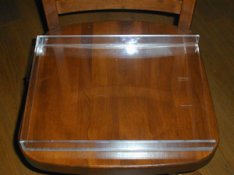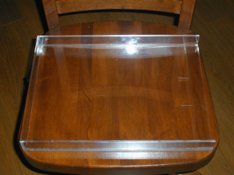Scott,
At first I considered building a darktent using the pop-up frame from a camping shower tent. Alas my sewing skills prevented the successful completion of that project. I then built a tent out of inexpensive white curtain blackout material and PVC pipe. The stuff was too heavy and too fragile to be practical.
Then I built the silver darktent. Nice to work in, lightweight but bulky, and a pain to set-up frequently. If I'm staying in the same spot for a couple days, I would set it up at camp.
Next I built a darkbox using the curtain blackout material again. This particular box was just slightly too large to fit easily into my car and it lacked wheels. The second darkbox uses Porter's premium darkroom fabric which is much lighter weight than the other stuff. The wheels make the darkbox easy to transport and it takes about a minute to set it up or tear down. It is much more convenient in that respect and it has adequate room. It could also be set up on a picnic table, the bed of a pickup truck, etc., using a smaller inside sensitizing tank and covering the hole in the bottom using a sliding door I've also incorporated there. The downside is the fabric is black and it can get hot inside, but once the plate is in the tank with the cover on, I can leave the shroud and open the sliding safelight window if I choose so it is not really a problem.
The last was the RV which sets up in about 5 minutes. It is the most comfortable and convenient to work in plus it has a lot of storage space. Downside is the mpg and fact that it can't go places where the darkbox could be hauled. But, I actually have the darktent and darkbox stored inside it in case I want to go well offroad.
I had about $300 into the first tent, $1000 into the silver one, about $100 into the first darkbox, maybe $250 into the second darkbox, and the RV was $900 to start (then a suspension job and some upcoming work) plus $100 in Velcro.
The darkbox represents a nice compromise between economy, transportability, and ease of use at a relative low cost.
Joe




 I bet there is lots of good stuff.
I bet there is lots of good stuff.


